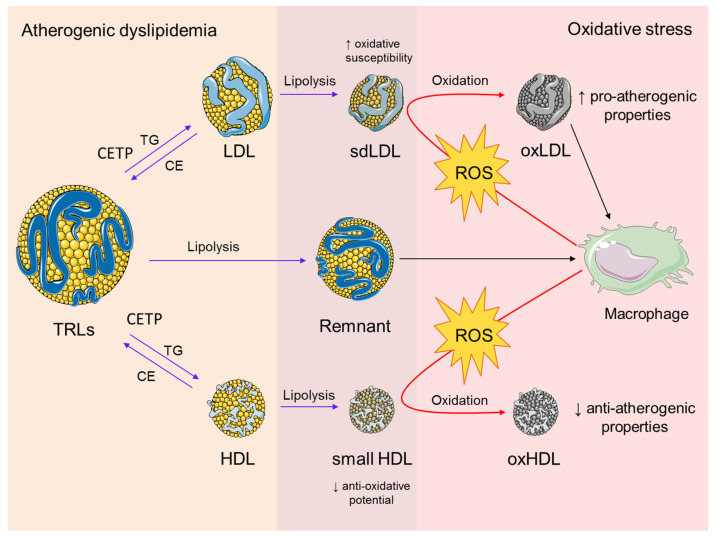Figure 3.
The interplay between atherogenic dyslipidemia and oxidative stress. Atherogenic dyslipidemia is characterized by increased plasma levels of TRLs. It is also associated with enhanced activity of CETP, which mediates the exchange of core TGs in TRLs for CE in LDL and HDL particles. A subsequent process of lipolysis results in the formation of sdLDL and small HDL particles with increased oxidative susceptibility and reduced anti-oxidative potential, respectively. The lipolysis of TRLs generates remnant particles, which are capable of accumulating in the macrophages in their native form. Enhanced production of ROS by the macrophages induces oxidative modifications of sdLDL and HDL particles. The main pro-atherogenic effect of oxLDL particles is reflected by their preferential uptake by macrophages and consecutive foam cell formation, while oxHDL has compromised anti-atherogenic properties. Both oxidized LDL and HDL particles act synergistically in the maintenance of a pro-oxidative state during the progression of atherosclerosis. Abbreviations: TRLs, triglyceride-rich lipoproteins; CETP, cholesteryl ester transfer protein; TG, triglyceride; CE, cholesteryl esters; sdLDL, small dense LDL; ROS, reactive oxygen species, oxLDL, oxidized LDL; oxHDL, oxidized HDL. The figure was composed using Servier Medical Art templates, licensed under a Creative Common Attribution 3.0 (https://smart.servier.com, accessed on 22 August 2023).

